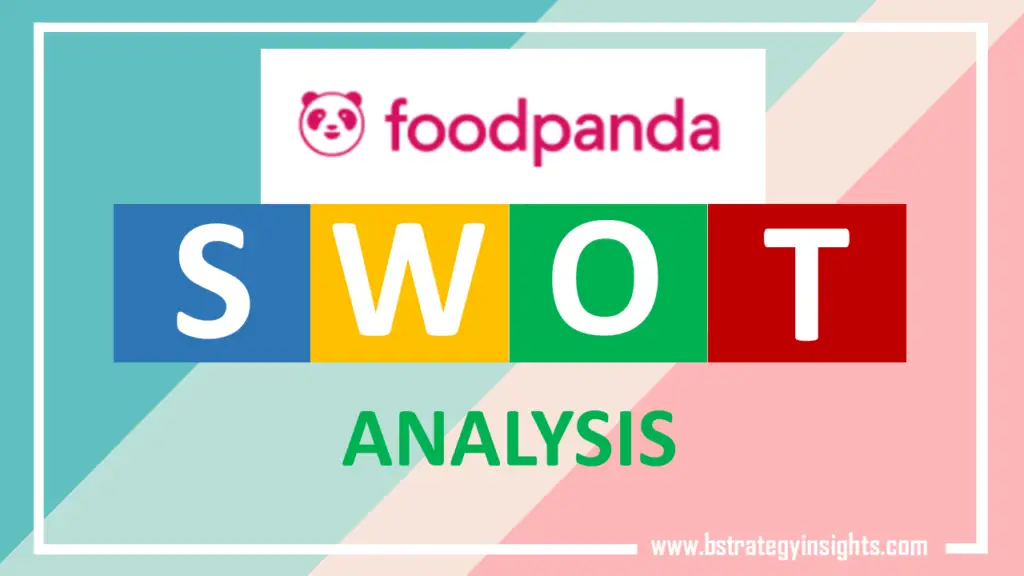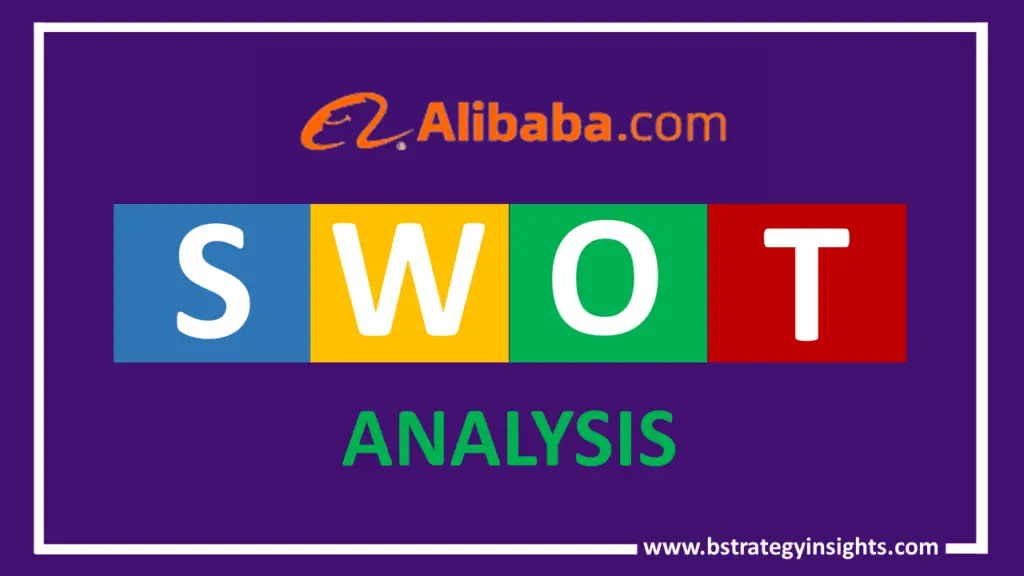
Foodpanda is a German-based mobile food delivery platform that started in 2012. The company has grown to be the biggest food-delivery app in Asia.
In this article, we cover the SWOT analysis of Foodpanda consists of strengths, weaknesses, opportunities, and threats. So let get started!
Foodpanda – At a Glance
| Name | Foodpanda |
| Website | Foodpanda.com |
| Founders | Ralf Wenzel, Rohit Chadda, Ben Bauer |
| Chief Executive Officer (C.E.O.) | Ralf Wenzel |
| Headquarters | Berlin, Germany |
| Type of Corporation | Private |
| Year Founded | 2012 |
| Key Products/Services | Food delivery |
| Key Competitors | Grab Holdings Inc., Gojek and Deliveroo Plc |
Strengths of Foodpanda
Top Rated Food Delivery Service and Platform
Panda features in the top ten food delivery applications according to the number of downloads for the app. In 2020, Foodpanda came in fourth in overall downloads from App Store and Google play. In 2021, it ranked among the top ten food delivery app downloads. This shows great awareness of the brand’s services and an increasing opportunity to serve.
Strong and Strategic Partnership Network
From the time of its inception, FoodPanda has strategically partnered with various entities to ensure the best service delivery and an enriched customer experience. FoodPanda has partnered with more than 115,000 restaurants and over 80,000 riders for their food delivery. The brand identifies its choice restaurants, riders, and customers as the back-born for its business growth.
The brand has strategic partnerships with robotics startu-ups Nanyang Technological University, Singapore Student start-up, Whizz mobility, and OTSAW for its driverless food deliveries in Singapore. This will cut costs in the long run and improve both efficiencies and effectiveness.
Leverage on Technology
To boost its efficiencies in its operations, Foodpanda has invested in location intelligence technology. Foodpanda’s platform uses location intelligence to determine the best service that is available within the vicinity of the customer. The brand uses an algorithm that seeks to optimize wider zone coverage and delivery time. The platform further optimizes customer’s choices through an analysis of customer order behaviors.
The use of delivery intelligence also helps optimize delivery time by reducing the waiting time for delivery riders. Rather than have a rider who is near the restaurant wait for the order to be prepared, the algorithm determines the average food preparation time and allocates a rider who will reach the restaurant at the time the food is ready. This eliminates any idle time for riders. This technology also boosts efficiencies through geo-targeted campaigns that help increase the customer base in areas that are under-penetrated. Lastly, it ensures superior customer experiences through hyper-local personalized campaigns.
Weaknesses of Foodpanda
Bad Communication Strategy that Leads to Bad Publicity
In August of 2020, Foodpanda faced a boycott that was launched by Thai pro-democracy protesters over its advertisements on Nation TV. This had the company suspend all its advertisements on Nation TV. In 2021 July, the company again suffered another widespread boycott in Thailand following its tweet on the dismissal of one of its drivers that was seen near a place where a royal portrait was burnt during protests.
Reports indicate that with this tweet, more than 2 million Thai users of Foodpanda deleted their accounts with many restaurants threatening to pull out of the partnership with Foodpanda. The company apologized for the miscommunication. Around the same time, the brand experienced unrest in the Philippines over alleged unfair wage policies that saw the brand suspend over 30 riders for 10 years.
The company explained that this was a technical glitch on the rider’s software. All these are costly on the brand image and brand value. The brand needs to be extra careful with its communication, policies, and crisis management to avert such eventualities.
Gaps in Customer Service
Customer reviews online are relied on heavily by customers when looking for trustworthy services. Food Panda has had average ratings from customers all over the globe. Foodpanda is rated 1.25/5 stars on Trustpilot.com from 441 reviews, 2.4/5 stars on facebook.com out of 469 reviews, it has 1.7/5 stars rating on mouthshut.com and has 1.7/5 stars on pissedconsumer.com.
Concerns about FoodPanda include bad customer service, misunderstandings in some billings, and issues with orderings among others. FoodPanda needs to work on their customer satisfaction gaps to ensure better customer satisfaction.
Opportunities of Foodpanda
Increased Personalization of Service through Data Analytics
FoodPanda seeks to drive its product development through data and social media analytics of its customers’ food orders and social interactions. The brand is looking to build predictions on customer orders and to stretch its capabilities of understanding customers’ tastes and preferences. This will give the brand great opportunities for innovation, more customer satisfaction, and more revenues streams.
Growth in the Food Delivery Industry; Seismic Shift to Online Orders
Since the advent of COVID in 2019, the food delivery industry has witnessed a boom. This market has grown from $8.7 billion in 2015 to $26.5 billion in 2021. While restaurants are now back to normalcy, the boom has created an increased awareness of food delivery and created greater opportunities for players in food delivery service to grow their service.
FoodPanda needs to continuously and strategically position itself to make the most of this growth and boom in its industry.
Technology Innovations
There are immense opportunities with technological innovation to enhance food and delivery service. Food technology has greatly advanced; restaurants can leverage on this novel technologies to get competitive advantages in the marketplace where they have yet performed well.
Technological innovations in food delivery are available for effectiveness and efficiency. Foodpanda in Singapore is already advancing driverless deliveries in strategic partnership of three robotics start-ups.
Threats of Foodpanda
Stiff Competition
While the brand was an early entrant into the food delivery market, other brands have well established themselves operating both locally and in the global arena. This threatens Foodpanda’s market share in all its markets. Foodpanda needs to be more innovative, and un-compromising on superior customer service to edge out the competition.
Boycotts
The brand has had multiple boycotts in a span of less than two years. This gives the brand bad publicity and damages the brand image. It leads to the loss of customers and even partners. This could cost the brand heavily in customer acquisition and retention costs. The brand needs to have a strong public relations strategy to avert any such boycotts.
Conclusion
Foodpanda is a strong brand in the market with a huge brand name and investment in technology to ensure a competitive edge. The brand however needs to be concerned with bridging gaps in customer satisfaction, averting any further boycotts, and beating the competition. Luckily there are immense opportunities in the food delivery market given the shifting paradigm to virtual working among other factors.


